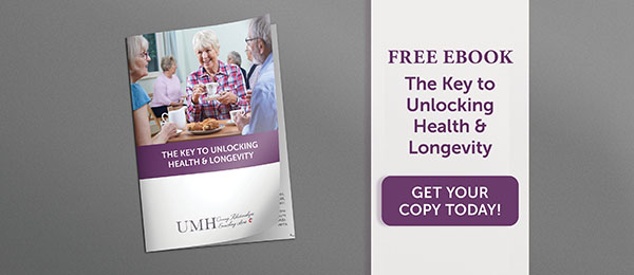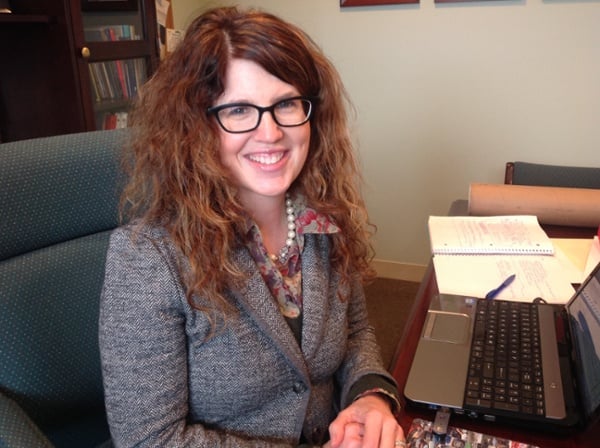It’s true: The role of family caregiver has traditionally been a female one, and the majority of today’s caregivers are, in fact, women. However, data has shown a significant upward trend in the number of men that exist among today’s family caregiving population. Although husbands, brothers, sons, and other male loved ones may not typically be recognized for their emerging presence within this dynamic, they are increasingly challenged to perform ongoing caregiving tasks—whether by choice or out of sheer necessity.
In this article, we’re highlighting some of the current data on caregiving as it pertains to gender, and spotlighting the issues male caregivers may face as they take on this role in their loved one’s life.
Spotlighting the Stats on Male Caregivers
According to AARP’s Breaking Stereotypes: Spotlight on Male Family Caregivers, the most recent Caregiving in the U.S. survey indicates that 40 percent of family caregivers of adults are men, which equates to 16 million male family caregivers in the United States.
The average age for a male family caregiver is 47.8 years old, but there is nuance in these numbers based on the relationship between the caregiver and the care recipient:
- 28 percent of all male family caregivers are millennials, the average age for which is 26.9 years old.
- The average age of a son caring for a parent or in-law is 46.4 years old.
- The average age of a male family caregiver caring for a spouse/partner is 62.5 years old.
The survey also shows that similar to females, nearly half of all male family caregivers felt they
had no choice in taking on this responsibility, a number that rises to 6 in 10 for male family caregivers caring for a spouse/partner.
Other factors affecting the experience of the male caregiver population include things like age, living situation, and the recipient’s condition. For example:
- Although the average age of the care recipient is 68.8 years old, sons caring for a parent or in-law were slightly older at 74.8 years of age.
- The care recipient is likely to live in the caregiver’s household or within 20 minutes of his or her home. More than a quarter of care recipients (26 percent) lived alone.
- About 23 percent of care recipients had Alzheimer’s or experienced mental confusion.

Understanding Unique Challenges for Caregiving Men
The AARP report reveals that while “there are some misperceptions that male family caregivers perform activities related only to managing finances and providing transportation, evidence suggests they are also performing a range of personal care activities.”
The data indicates that:
- 4 in 10 male family caregivers reported helping the care recipient get in and out of beds and chairs.
- More than one-quarter said they helped the care recipient get dressed; 30 percent reported helping the care recipient get to and from the toilet.
- About 1 in 4 reported helping the care recipient with eating, bathing, and showering.
- Male family caregivers helped with 1.7 ADLs on average, but male caregivers caring for a spouse reported helping with 2.1 ADLs.
“Male family caregivers perform such personal care tasks despite having some reservations about doing so, or experiencing some discomfort and difficulty with the task,” states the report.
“The transition of having to bathe or dress an aging parent or grandparent can be difficult for any family caregiver. However, this is especially challenging for male family caregivers, in part because they have less background in having to perform these activities. In fact, over half (54 percent) of male family caregivers in the Caregiving in the U.S. 2015 survey found it moderately to very difficult to help recipients with their personal, intimate care needs.”
In addition, the report shares that male family caregivers are increasingly performing tasks that nurses traditionally have performed. For instance:
- More than half of male family caregivers experienced at least one hospitalization of their care recipient in the past year. A quarter of male caregivers reported that their spouse had three or more hospitalizations.
- More than half of all male family caregivers were performing medical and nursing tasks, and three-fourths of male caregivers caring for a spouse were performing these medical and nursing tasks.
- About 47 percent of male family caregivers who performed these tasks were giving medicine, pills, or injections.
What may be even more eye-opening about these numbers is that 72 percent of all male family caregivers who performed medical and nursing tasks indicated that no one prepared them to do so.
On top of that, the survey data showed that male family caregivers were more likely (66 percent)
to be working compared with female caregivers (55 percent). The large majority of employed male caregivers were working 40 or more hours per week at the time of caregiving.
Accessing Support for the Male Caregiving Population
Given all of the challenges facing today’s male family caregiver, the job can certainly be a stressful one. And while plenty of these men desire to take on this responsibility and feel compelled to care for their loved one in the best way they know how, there are still needs and tasks that can become quite overwhelming—particularly those that breach the limits of a male caregiver’s knowledge, skills, comfort and capability.
Just like all caregivers, men in this position should seek out resources and support to assist them on this journey. For males caring for an aging loved one, it may be the right time to consider the benefits of a senior living community. From respite care and rehab to assisted living, independent living and memory care, there are plenty of options to suit the needs of an aging loved one, and each option for care and support has different advantages.
Caregivers should carefully consider the needs of the senior in their life as well as their own needs and those of their family, always remembering that self-care and mental health is of great importance in being able to support an aging loved one in the best way possible.
For information and insight on how to thrive as a caregiver, download your free copy of The Essential Caregiver's Guide.
To find out how United Methodist Homes provides a wealth of offerings and opportunities to support the health and well-being of our residents, contact us today or schedule a complimentary visit now.







